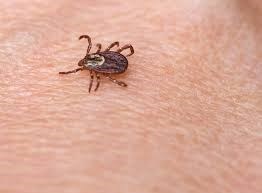Saskatchewan people are reminded that warmer weather brings an increased risk of tick bites for those who spend time outdoors. Ticks are out from early spring until early October, particularly in tall grass, brush or wooded areas.
“It’s wise to take simple precautions before being outside in grassy, bushy or treed areas, and check yourself and your children and pets for ticks afterwards,” Saskatchewan’s Chief Medical Health Officer Dr. Saqib Shahab said. “If any ticks are found, they should be carefully and promptly removed.”
Precautionary measures include the following:
Wear pants, long-sleeved shirts and shoes that don’t show your feet.
Pull socks over your pant legs to prevent ticks from crawling up your legs.
Wear light-coloured clothes so ticks can be seen easily.
Use insect repellents that contain DEET or Icaridin. Apply repellent to clothes as well as your skin. Always read and follow the directions.
Shower or bathe within two hours of being outside to wash off loose ticks.
Do “full body” tick checks daily on yourself, your children and pets.
In Saskatchewan, the chance of people being exposed to Lyme disease from a tick bite is very low, though not zero. Over the past ten years, three cases of Lyme disease have been reported through the province’s surveillance system. Two were acquired outside of Canada, and one likely originated within the province.
“Most ticks found in Saskatchewan are not the type that can transmit Lyme disease,” Entomologist Phil Curry said. “Less than half a per cent of ticks found here are the blacklegged or deer ticks, and only a small percentage of those may be infected.”
The risk of acquiring Lyme disease is evolving across the prairies. The risk increases in those areas of southern Canada and the U.S. where there are established populations of the tick that transmits Lyme disease.
Information on ticks and Lyme disease is available at www.saskatchewan.ca.



